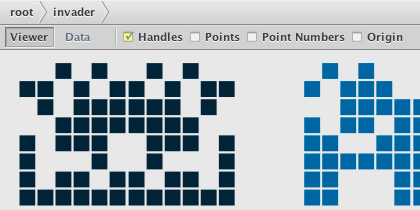

Think of a central concept that interests you. If you don't know where to start, here are some good clusters of knowledge in the network: If this is the case, contact us and we'll set you up with some editing rights. If you are planning on getting your hands dirty you may need to be able to edit existing rules to reorganize or restructure clusters in the network. If the tool catches on and lots of people are going to be adding rules, we may want to contact you to learn something about your cultural background.Īt this point you can only add rules in the online application. We encourage you to use your e-mail address. This way, your own set of rules can be set apart from all the other rules - you can filter for your ID so you only get to see your own data, regardless of what anyone else is saying. When you add your own rules to the network you are encouraged to leave an e-mail address or some other identification code. Contexts can be used as a filter to narrow down the rules being displayed. Sets of related rules are organized in a context, like nature or culture.
#Nodebox network graph code
These are properties we think are good candidates to connect to pieces of NodeBox code to generate associated visual output. If you open up the "from property" window in the web app you'll notice that some properties are highlighted. When we start tagging other concepts with these properties (e.g bright is-property-of sun) we are basically teaching machines something about aesthetics and the visual world. Hence, bright and trendy are useful sensory go-betweens. The Colors library offers a few tools to do that. We can easily define bright in terms of saturation and brightness, and trendy in terms of specific hues (like pink). Properties are at the heart of the network because we can use them to translate language to visual output (which is the main goal of the Perception module).Īt one end we have people using conceptual constraints like bright and trendy colors, at the other end we have machines with technological possibilities like a HSB color model. font is-same-as typeface.Įverything that has an is-property-of relation to another concept is regarded as a sensory property. is-same-as: this relation is called a synonymy, both related concepts are equals, e.g.Two concepts linked in this way are psychologically related, e.g. is-related-to: an associative relation.For example: dark is-property-of night, sharp is-property-of knife. The concept on the left tells something about how the word of the right looks, feels, sounds, smells, or is processed emotionally. is-property-of: shorthand for is-sensory-property-of.is-opposite-of: this relation is called an antonymy.It defines the parts of a whole, components, members, substances, e.g. is-part-of: this relation is called a meronym-holonym relation.It connects a specific concept to a larger class of similar concepts, e.g. This relation is called a hyponym-hypernym relation. The network supports six different relations: This will yield the sort of sensory, emotional, subjective knowledge we want in a visualization tool like NodeBox. Our purpose is not to recreate these - instead, in the Perception network we focus on the is-property-of relation which describes what something looks or feels like. There are lots of existing and well-known semantic networks (WordNet and Wikipedia to name two). The advantage of using these semantic rules is that they make sense to both people and machines. The application is built to work with the Safari and Firefox browsers.Ĭoncepts in the Perception network are connected to each other with semantic relations. Downloadĭependencies: Graph library (latest version)Īuthors: Tom De Smedt, Frederik De Bleser The library introduces some advanced programming concepts. Tony Veale and Yanfen Hao in their paper. It also contains a simile search technique as discussed by Dr. The library uses the functionality in the Graph library to find shortest paths and strong concepts in the network. The module has two parts: an online application where you can add new rules to the network, and a NodeBox library to retrieve clusters of rules and analyze them. Concepts in a semantic network are connected to each other with semantic relations. The data is organized in a so-called semantic network (like WordNet). The purpose of the NodeBox Perception module is to incorporate commonsense knowledge into NodeBox of how things look, feel, smell and relate to other things.


 0 kommentar(er)
0 kommentar(er)
